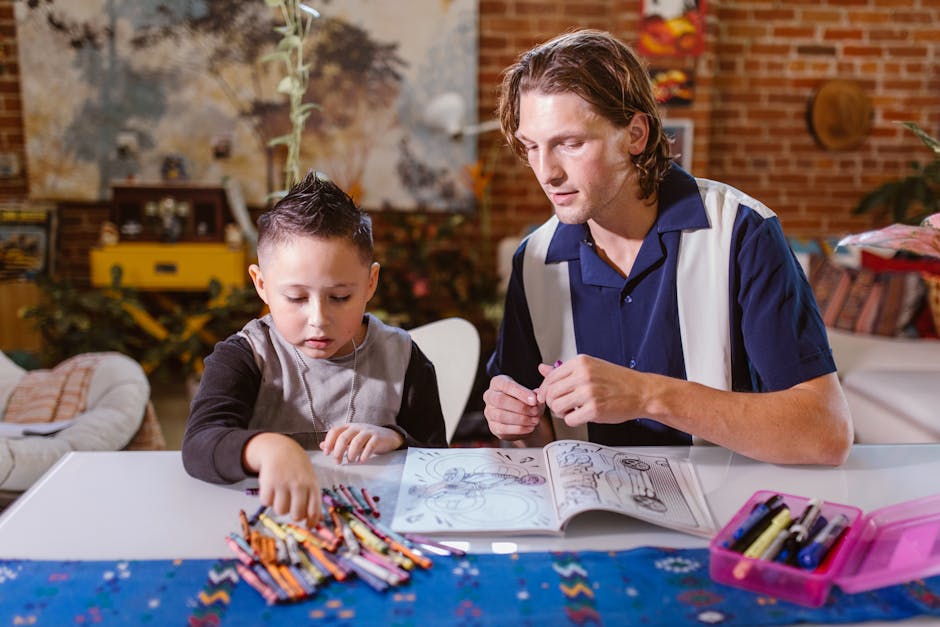Importance of nurturing creativity in children
Children who engage in creative activities during their early years tend to develop strong problem-solving skills and a healthy imagination. Research shows that creativity plays a crucial role in a child’s cognitive development, aiding in their ability to think critically and adapt to new situations. Moreover, nurturing creativity in children encourages them to express themselves freely and develop confidence in their ideas. By offering a balanced preschool curriculum that includes various creative outlets such as arts and crafts, music, and imaginative play, parents and educators can help foster a child’s creativity, setting a strong foundation for their future learning and success.

Benefits of a balanced preschool curriculum
A balanced preschool curriculum helps develop your child’s creativity by offering a variety of activities. It allows children to explore and learn through play, art, music, and movement. This type of curriculum also encourages social interaction and helps children develop communication and problem-solving skills. Moreover, it can lay a strong foundation for future academic success by providing a well-rounded approach to learning.
Ways to foster creativity in preschoolers
Children thrive in environments that encourage creativity and exploration. Here are some simple ways to nourish your child’s creativity at preschool:
- Encourage open-ended play with toys that allow for imaginative exploration
- Provide opportunities for art and craft activities to allow children to express themselves
- Foster a love for nature and outdoor play, allowing children to discover and create in the natural environment
By incorporating these activities into your child’s preschool experience, you can help nurture their creativity and lay the foundation for a lifelong love of exploration and learning.
Incorporating art and music in preschool education
Incorporating art and music in preschool education is vital for your child’s creativity. Studies have shown that exposure to art and music at a young age can enhance cognitive development and improve problem-solving skills. By engaging in creative activities, children can learn to express themselves and develop a sense of individuality. Additionally, exposure to different forms of art and music can help children appreciate diversity and develop a broader understanding of the world around them.
Encouraging imaginative play and exploration
Encouraging your child to engage in imaginative play and exploration is crucial for their creativity and cognitive development. It allows them to think outside the box, solve problems creatively, and express themselves freely. By providing opportunities for open-ended play, such as building blocks, pretend play, and art activities, you can nurture your child’s creativity. A balanced preschool curriculum that emphasizes imaginative play and exploration lays the foundation for their future learning and development. It’s important to create an environment where your child feels free to explore their surroundings, use their imagination, and express their ideas without fear of judgment.
Role of a supportive learning environment
Creating a supportive learning environment is crucial for nurturing your child’s creativity. It helps them feel safe, valued, and encouraged to explore their interests and ideas. In a supportive environment, children are more likely to take risks, express themselves, and engage in imaginative play. Adults can play a key role in providing this environment by actively listening to the children, responding positively to their ideas, and validating their efforts. This kind of environment fosters a sense of curiosity and independence, laying the foundation for a balanced preschool curriculum that prioritizes creativity and holistic development.
Balancing structure and free play in preschool curriculum
To foster creativity in preschoolers, it’s important to strike a balance between structured activities and free play. Structured activities help children develop important skills like following instructions and focusing, while free play encourages them to use their imagination and explore their interests. A well-rounded preschool curriculum includes a mix of both, allowing children to learn and grow in a way that suits their individual needs. Emphasizing both structure and free play helps children develop a strong foundation for creativity and learning.
Developing critical thinking and problem-solving skills
Encouraging critical thinking and problem-solving skills in your child can greatly benefit their development. A balanced preschool curriculum provides opportunities for children to engage in activities that stimulate their problem-solving abilities and encourage creative thinking. By introducing activities such as puzzles, building blocks, and open-ended art projects, children can develop the skills needed to analyze and solve problems in a variety of situations. This type of learning environment fosters independence and creativity while laying the foundation for future academic success.
Impact of creativity on overall childhood development
Creativity plays a crucial role in your child’s development. Engaging in creative activities can help them develop problem-solving skills, enhance their imagination, and build confidence. Studies have also shown that children who participate in creative activities tend to perform better academically. Providing a balanced preschool curriculum with a focus on creativity can lay a strong foundation for your child’s future learning and development.
Choosing the right preschool for nurturing your child’s creativity
When selecting a preschool to foster your child’s creativity, it’s crucial to consider the curriculum’s balance. A balanced preschool curriculum includes various activities like arts and crafts, music, outdoor play, and storytelling. These activities provide opportunities for creative expression and exploration, which are essential for your child’s development. Look for a preschool with a curriculum that emphasizes creativity and provides a nurturing environment for your child to explore their imagination and artistic abilities.

